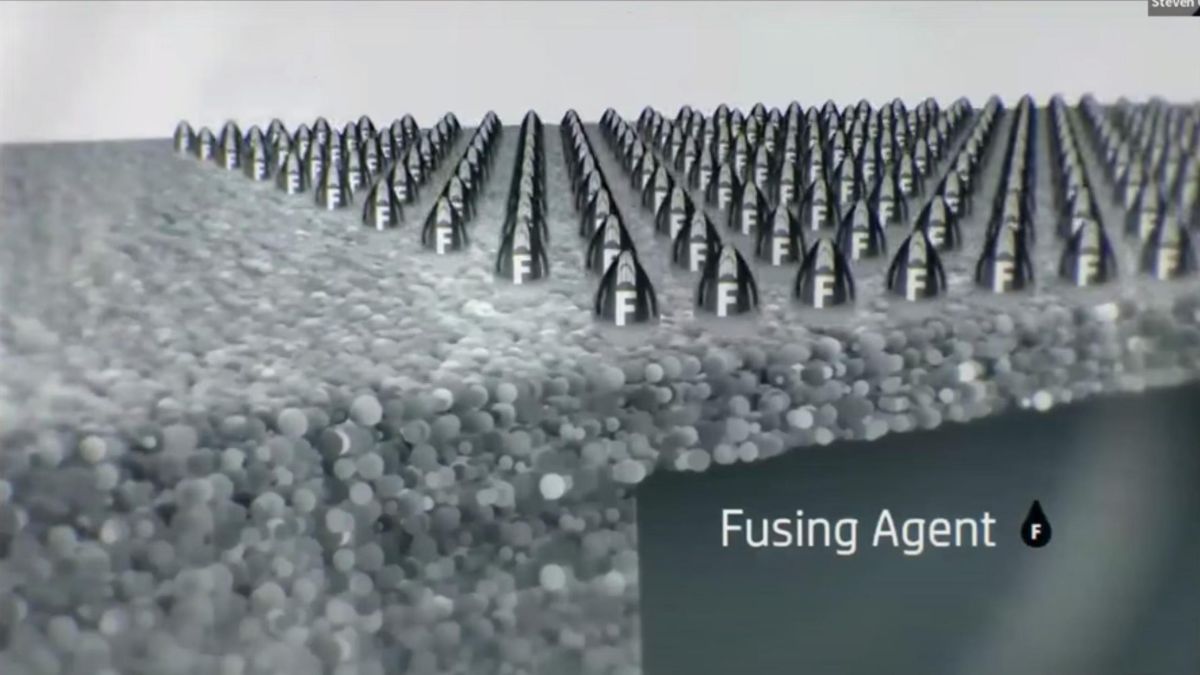Automotive repair is benefitting from 3D printing in myriad ways, from the busting of supply chain blockages to innovations in parts and tools.
Steven Corzyk, a mobility application engineer with Hewlett Packard, appeared on AirPro Diagnostics' TechTalk360 webinar series to talk about the benefits this technology brings to the industry. The process of 3D printing, he explained, is a cost-effective alternative to injection molding, in which molten material is injected into a mold before cooling and solidifying.
Printing can bring about a freer design process without a need for the die drawing and undercuts injection molding uses. Cost reduction is another big benefit. Printers, Corzyk said, can mean rapid, less costly prototyping and the ability for short runs. And time to market can also see significant improvement from printers, which can move that process from weeks to days with rapid production and adaptation of parts for changing product lines. Printer users can quickly move from design reviews to part reviews, too, he said, thereby reducing product transport time.
Molds vs. 3D Printers
Some aspects of injection molds make printers look especially flexible. The long lead times injection molding often require eventually affect end customers. Molds lost or damaged during shipping slow the process even more, Corzyk pointed out. Aftermarket supplies, which require stock storage, can trigger supply chain disruption when out of stock triggers are tripped, and besides that, he contended, new design iterations and improvements for molds are expensive.
The speedy, adjustable properties of printing, by contrast, can have a positive effect on supply chains, Corzyk said. And they offer sustainability in the form of lightweight and efficient part design optimized for function, better performance, reduced process waste. There's the possibility for lots of variations bespoke to customer needs with no additional tooling, he said, and there's less waste in printing than in molding. Printing, he pointed out, also means fewer assembly requirements and thereby reduced usage of adhesives.
Types of 3D Products
3D products run a gamut that can help in processes ranging from transport to design to production. Parts that need to be contained in a specific way, Corzyk said, can benefit from custom-printed packing, storage and transport materials like cardboard or molded foam. Visual prototypes can help in design processes, and short runs of aftermarket parts can aid in repairs on out-of-production vehicles.
 3D printers can aid in the production of OEM-certified parts.
3D printers can aid in the production of OEM-certified parts.
Printing of tools, he said, is particularly influential in standardization of procedure in repair of common or recurring problems in car models. 3D printers, he said, can produce elastomeric materials, which are non-marring -- an especially important property for tools.
While the production cost is generally lower than with molds, and processes can be flexible, 3D printing comes with its drawbacks. Most printed parts, Corzyk pointed out, are gray, although some can be made in white. These colors are fine for most tools or fixtures, but they aren't acceptable by OEM Class A standards. Dying, painting or finishing of parts, he said, is a way around this factor.
How 3D Printing Works
The printing process uses a layering effect. Inside a 3D printer, a thin layer of powder is spread across the build chamber. When the print heads come across, they use black ink, which promotes energy absorption. As the powder passes melting temperature, it fuses to the layer below it. This process, Corzyk said, happens hundreds of times, and the resulting item is encased in excess powder which is captured with a vacuum.
HP printers, he said, have produced parts used by major auto manufacturers. An alignment assembly tool has allowed Volkswagen to install badges on the front of its vehicles more efficiently. Ford has used printed wax sealant nozzles, and Peugeot offers a printed elastomer car accessory.
Choosing a 3D Printer
When choosing a printer, Corzyk stressed, it's important to look for a legitimate brand.
HP, as an example, he said, has put significant effort into pursuing certifications for approved parts when it comes to factors like flammability, dimensional accuracy and cytotoxicity. When individuals with non-OEM certified printers make cheap items, buyers may not know they're not legitimate choices for spare parts and in-plant usage. Top-level OEMs, Corzyk said, are taking counterfeits seriously and are coming up with ways to make printed parts verifiable. Since parts are printed layer by layer, a QR code or serial number can be embedded. UV ink can also be a way to identify counterfeit parts with blacklight-visible images.
Find previous episodes of the TechTalk360 series here.













Elizabeth Crumbly